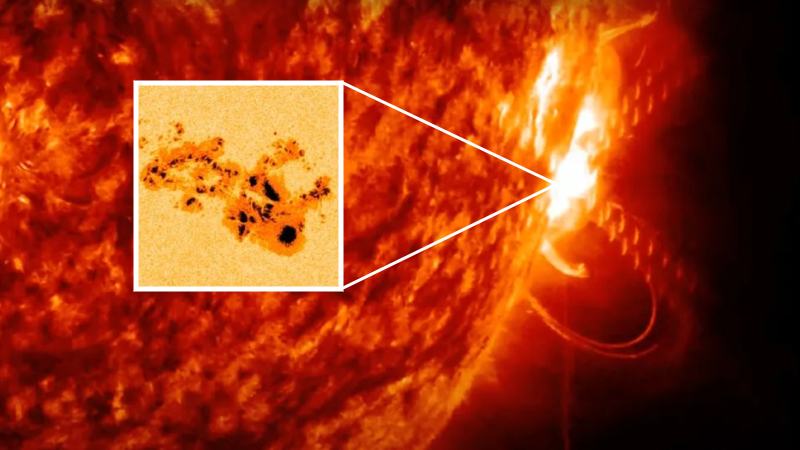New York City Has Been Obliterated in a New Asteroid-Impact Simulation

New York City, home to 8.6 million people and one hot duck, has perished in an apocalyptic meteor strike … in a simulation.
Over the past week, some 200 space experts from NASA, the European Space Agency (ESA) and other organizations have been melding their minds in order to face the crisis of a hypothetical asteroid barreling through space toward North America. The gathering, called the International Academy of Astronautics Planetary Defense Conference, convenes every year with the not-so-simple task of figuring out how to save Earth from a head-on asteroid impact — sort of like war games, but on a planetary scale. [Crash! The 10 Biggest Impact Craters on Earth]
During last year's meeting, the group successfully saved Tokyo from a catastrophic impact by launching a nuclear bomb at the asteroid, according to French news site AFP.com. The successful response ended a several-year losing streak that recently resulted in the obliteration of the French Riviera and Dhaka, the capital city of Bangladesh. Could the same nuclear tactics be used this year to save New York?
No. We're all doomed.
The simulation began last week when Defense Conference researchers received an alert that an asteroid between 330 and 1,000 feet (100 to 300 meters) in diameter was detected flying through space on a near-Earth trajectory. According to a fake press release from the simulation, the asteroid had roughly a 1% chance of striking the planet on April 29, 2027 (Day 5 of the simulation).
In simulation year 2021 (Day 2 of the conference), NASA launched a probe to study the asteroid more closely. Officials learned that the rock was on a collision course with Denver and that a direct hit would destroy much of the western United States. The chances of impact had risen to 100%.
On Day 3, the world's space powers met and resolved to build a fleet of six "kinetic impactors" — spacecraft designed to ram into the asteroid, slow its speed and deflect it off course. (NASA plans to test a real deflection strategy like this in 2022.)
In year 2024 of the simulation, the impactors launched and three of them struck their target. The collision successfully fragmented the asteroid and knocked the biggest piece off course — unfortunately, a smaller chunk was now headed directly for the eastern United States. The U.S. government considered nuking the asteroid but ultimately ran out of time due to political bickering.
Get the world’s most fascinating discoveries delivered straight to your inbox.
Instead, space agencies continued to monitor the asteroid with every technology available while government officials prepared to coordinate an evacuation. Two months before the impact, it became clear that the asteroid would obliterate New York City and everything in a 9.3-mile (15 kilometers) radius, while threatening life for hundreds of miles around.
America's most populous city was hastily evacuated, and on April 29, 2027, the asteroid hit. The rock entered Earth's atmosphere at a blazing 43,000 mph (69,000 km/h), then exploded over Central Park in a blast with 1,000 times the energy of the nuclear bomb dropped on Hiroshima. The city, and much of the surrounding countryside, was destroyed. Better luck next year.
While the chance of a giant asteroid smashing into Earth is pretty unlikely, it has happened before (sorry, dinosaurs!) and could happen again. In June 2018, NASA and the Federal Emergency Management Agency (FEMA) released an 18-page document detailing the steps the agencies planned to take over the next 10 years both to prevent potential asteroid strikes and to prepare the country for the worst if one should hit the planet.
The plan involves increasing ground-based surveillance of near-Earth asteroids, working with other nations to coordinate a national response, and planning a protocol for mass evacuation and emergency response. Let's hope the politicians can agree a little better in real life than they did in the recent simulation.
- Top 10 Ways to Destroy Earth
- The 12 Strangest Objects in the Universe
- 9 Strange Excuses for Why We Haven't Met Aliens
Originally published on Live Science.

Brandon is the space / physics editor at Live Science. With more than 20 years of editorial experience, his writing has appeared in The Washington Post, Reader's Digest, CBS.com, the Richard Dawkins Foundation website and other outlets. He holds a bachelor's degree in creative writing from the University of Arizona, with minors in journalism and media arts. His interests include black holes, asteroids and comets, and the search for extraterrestrial life.
 Live Science Plus
Live Science Plus





